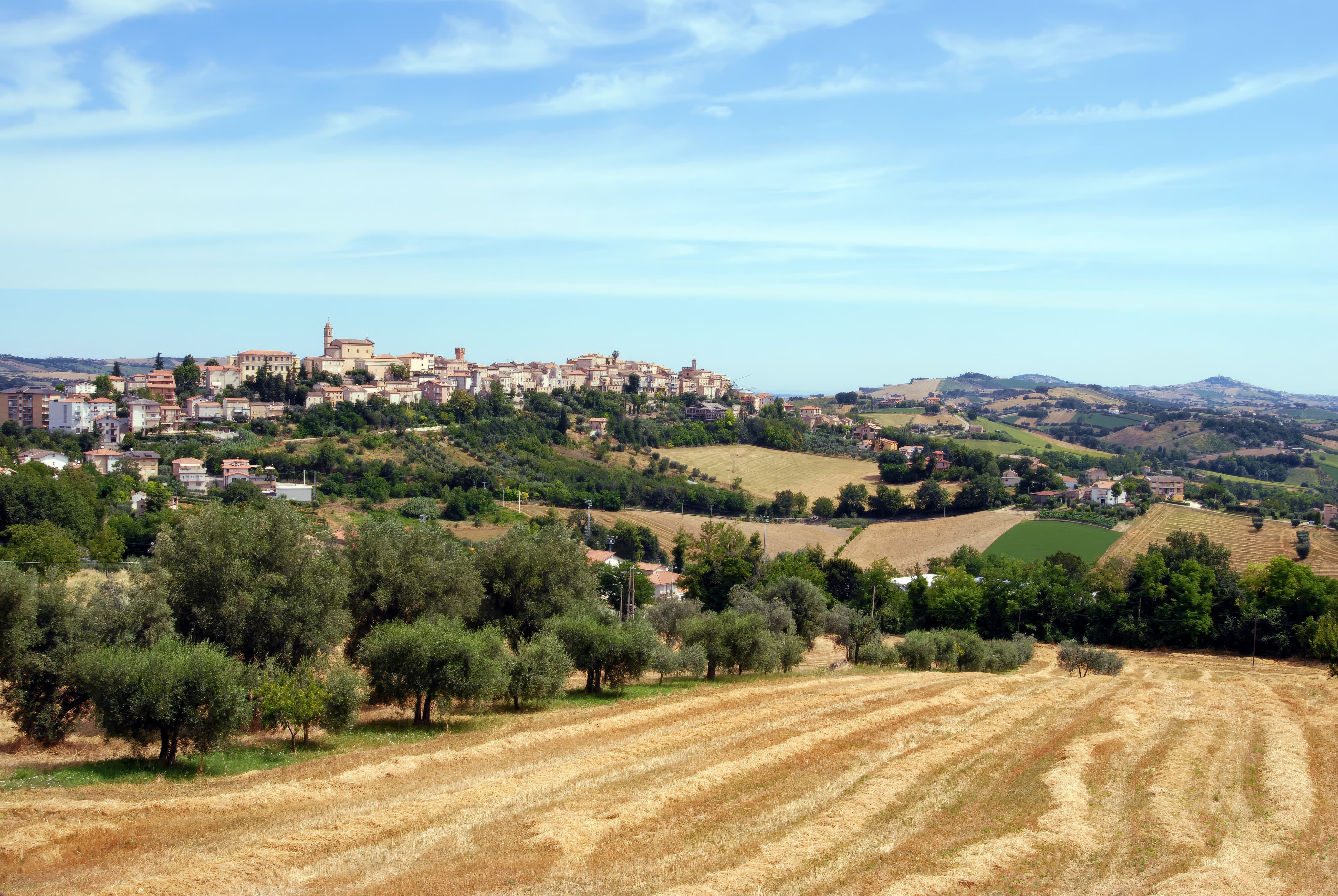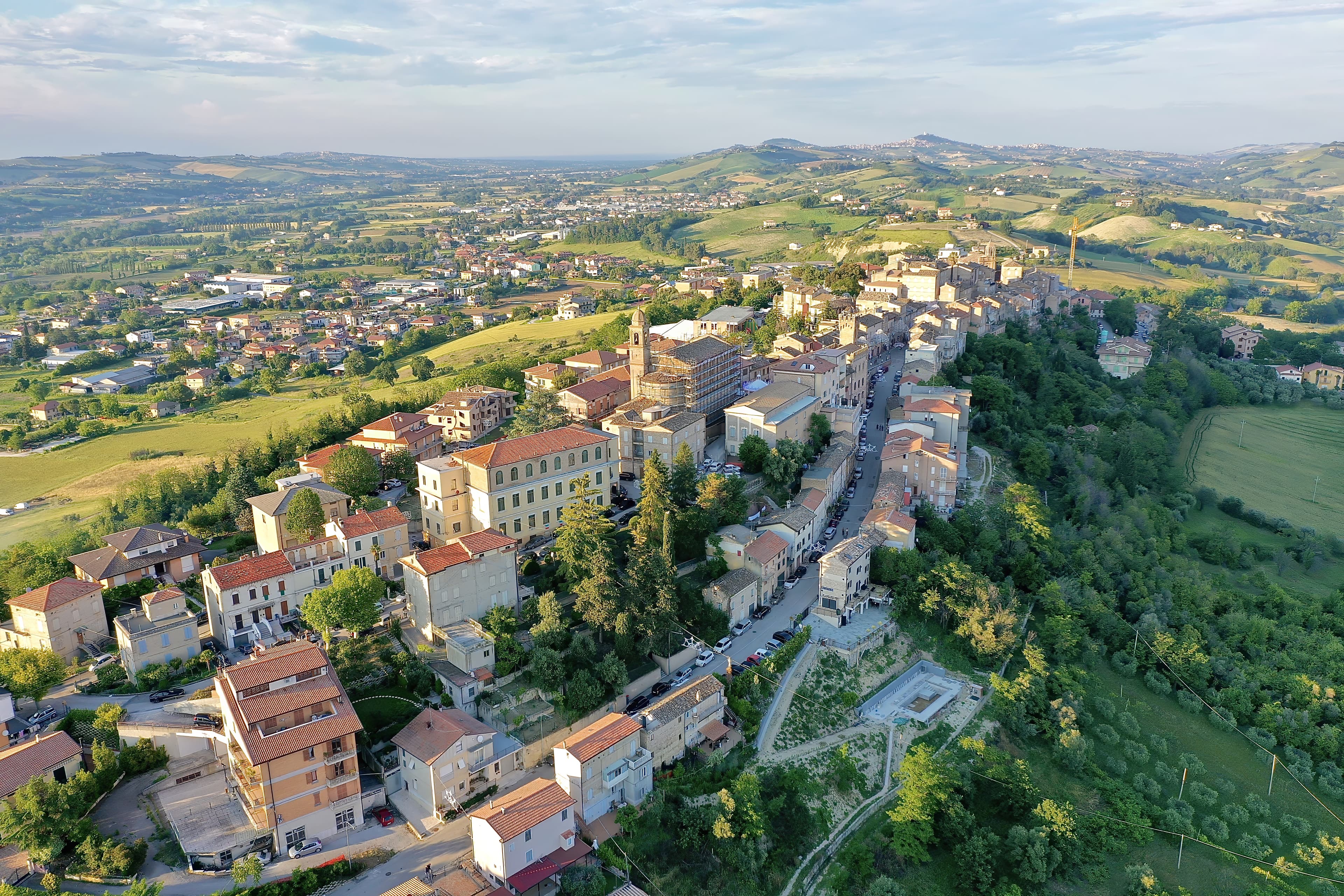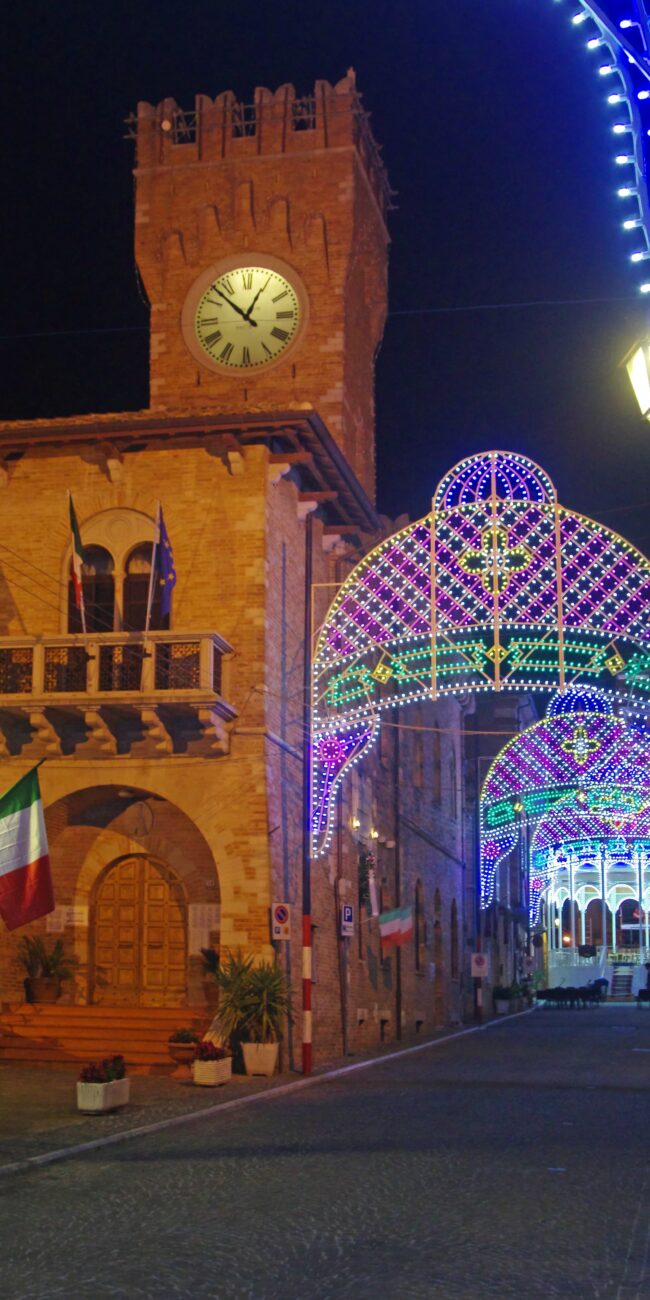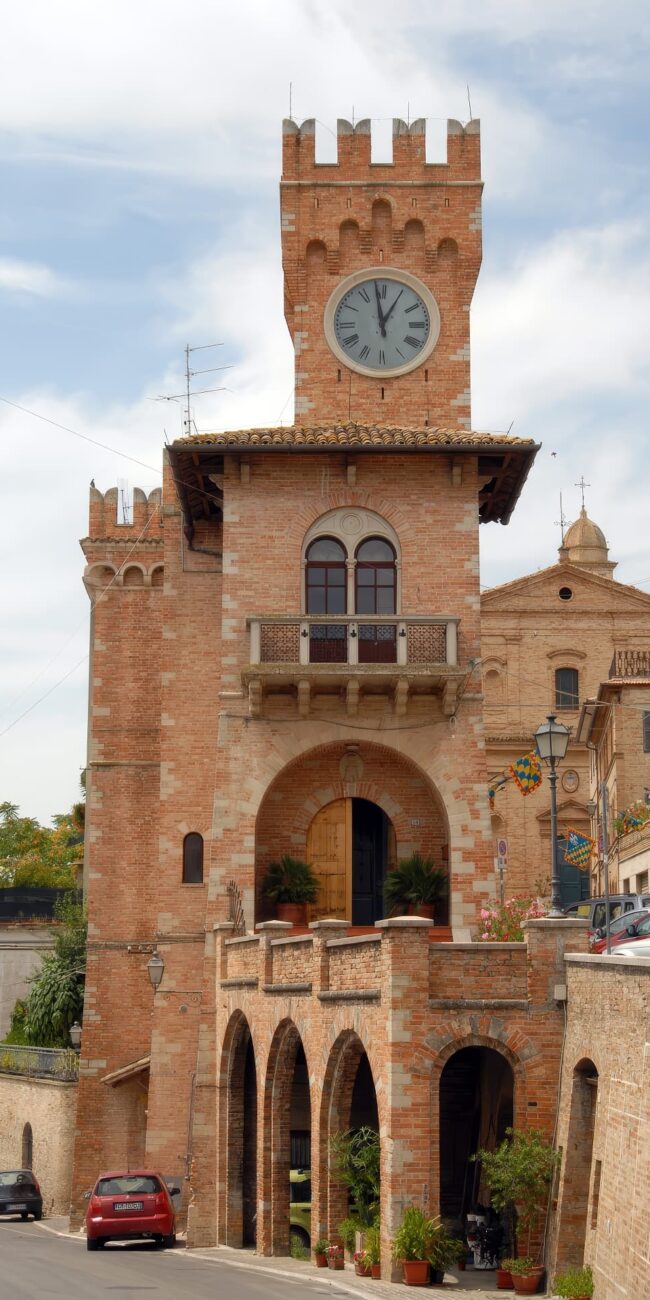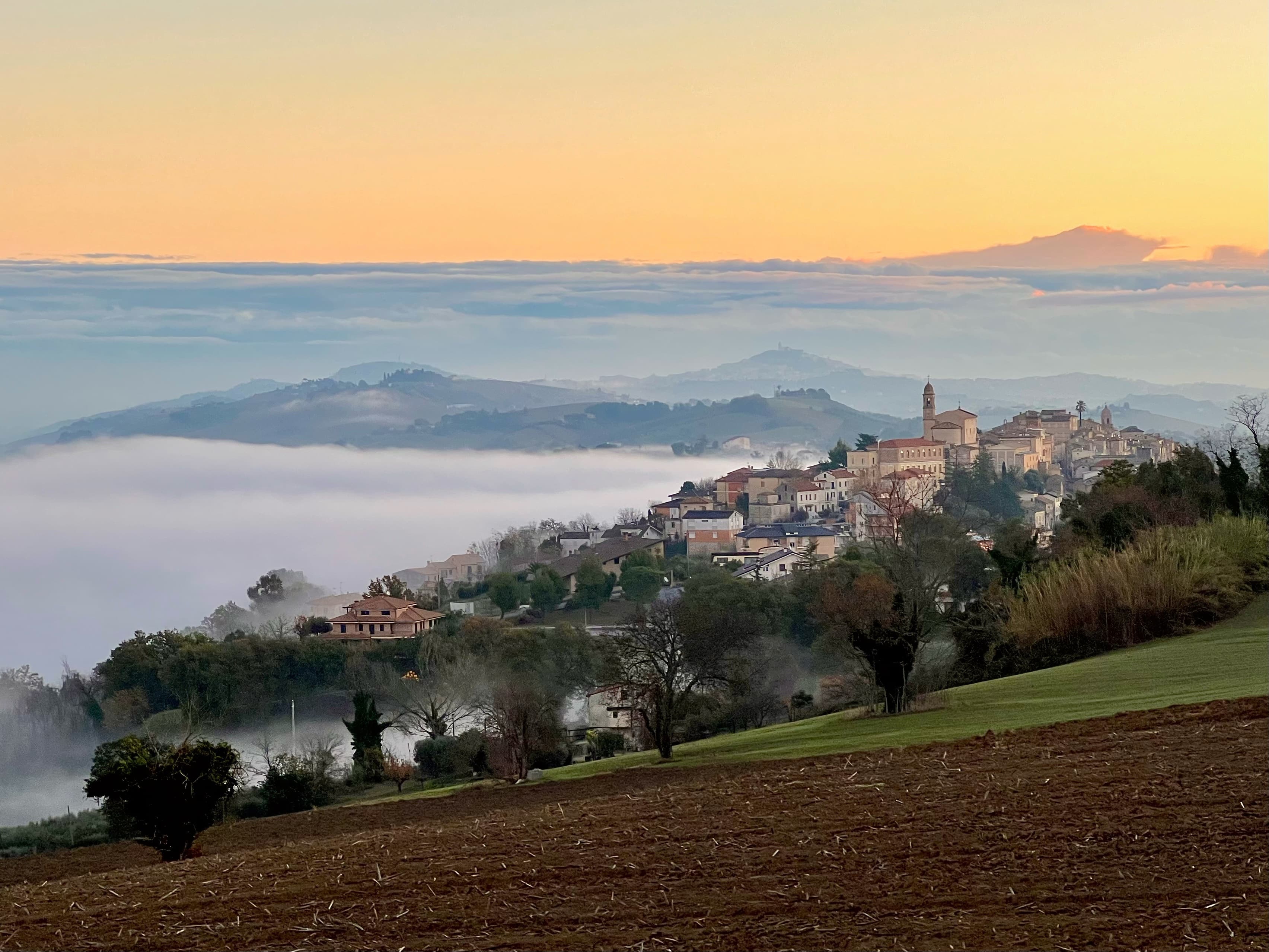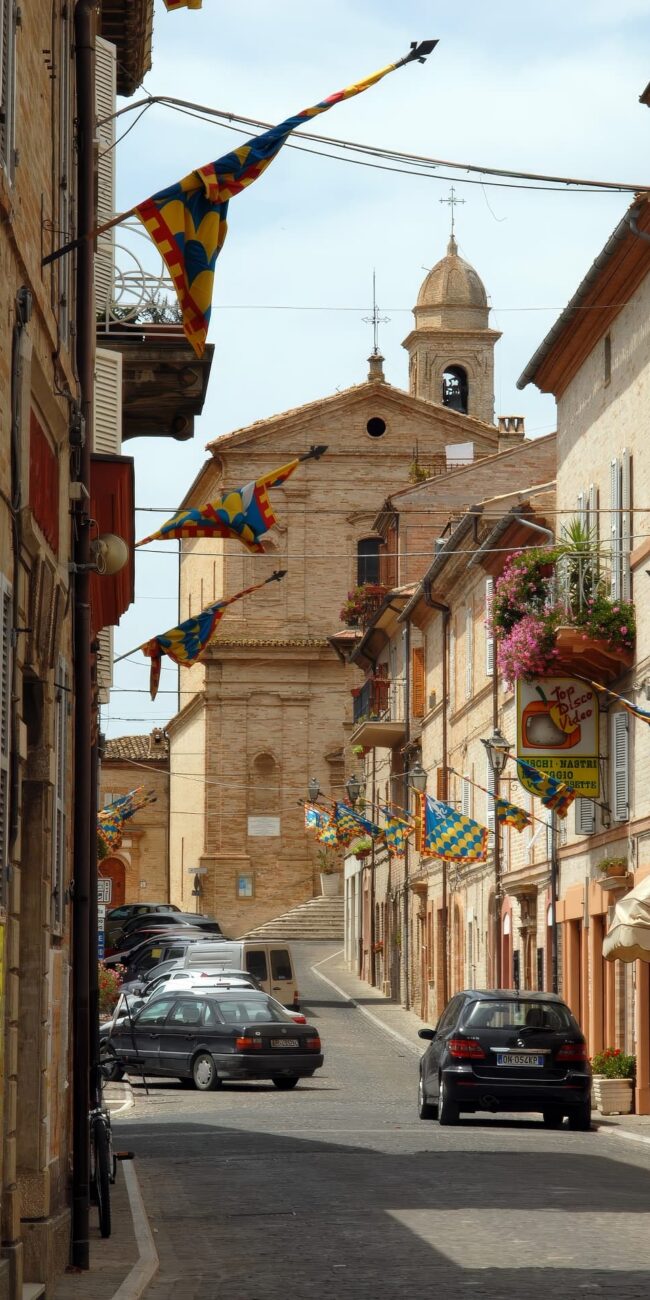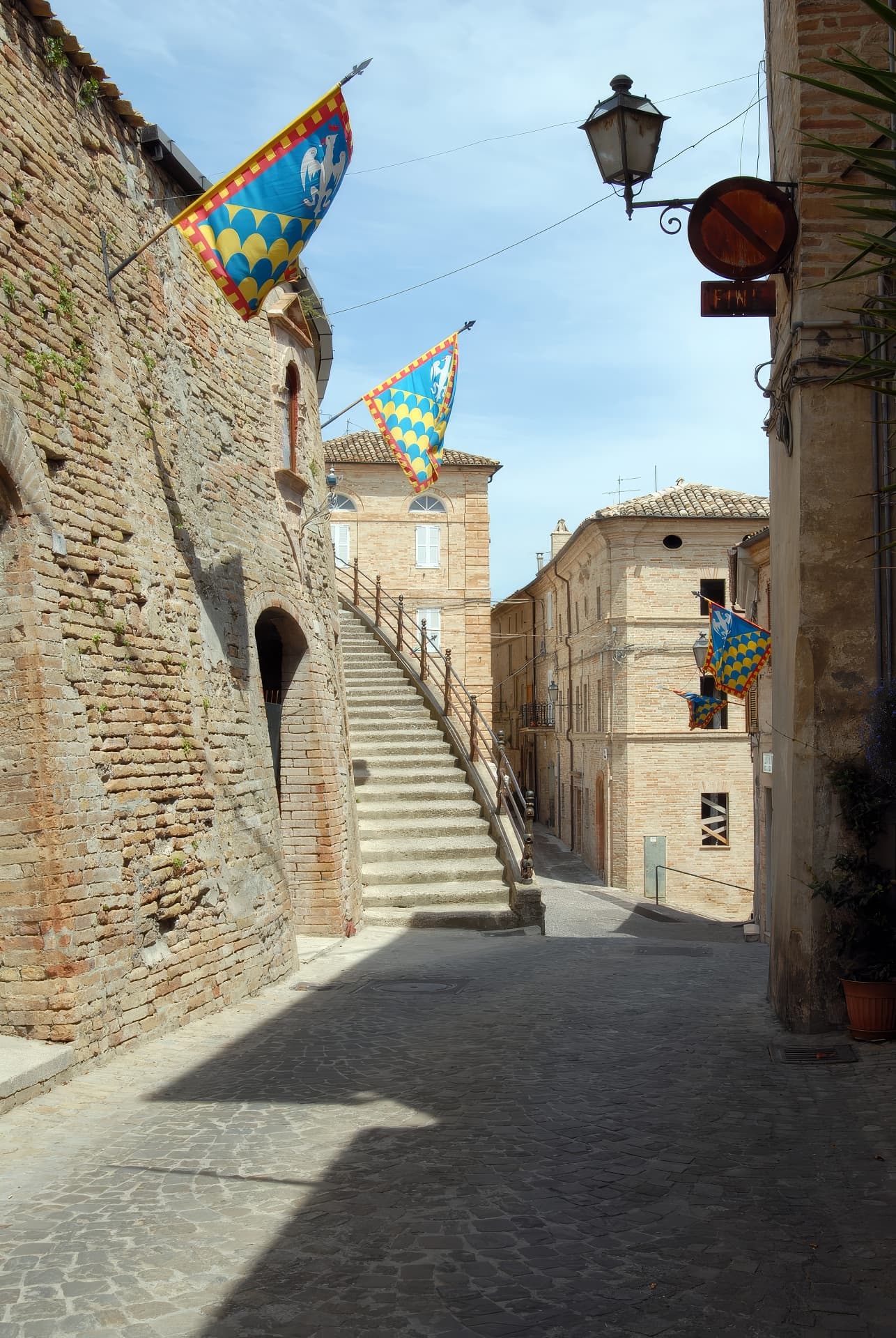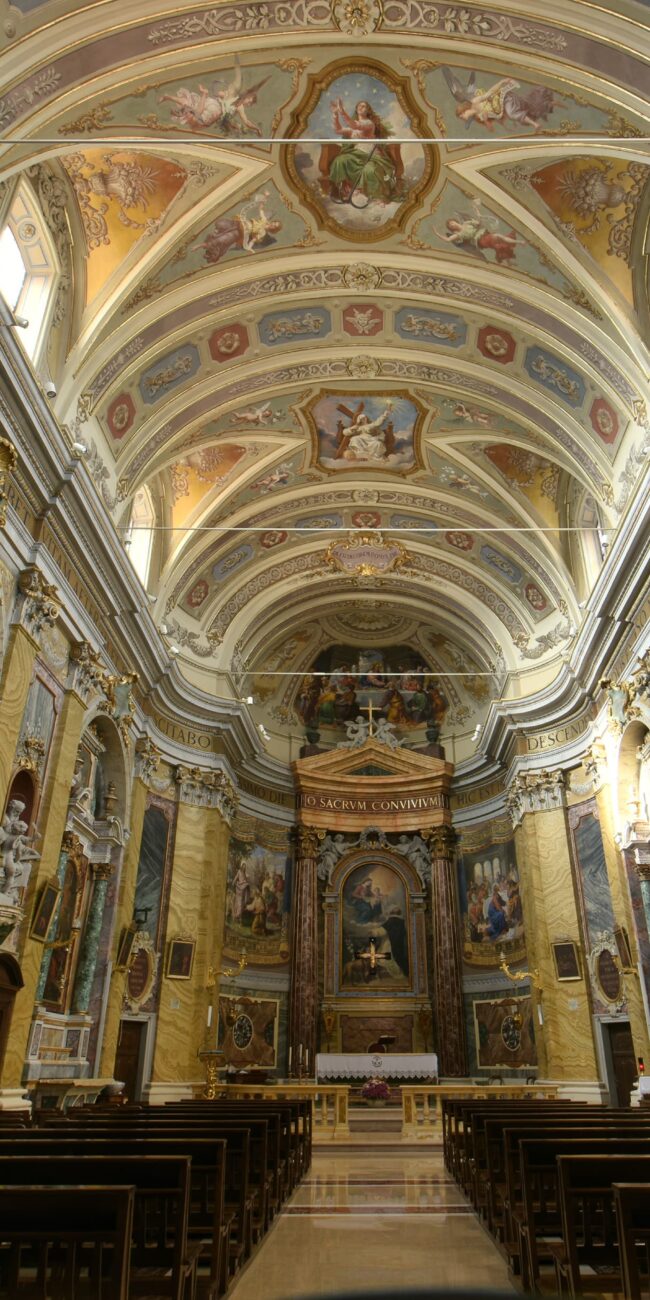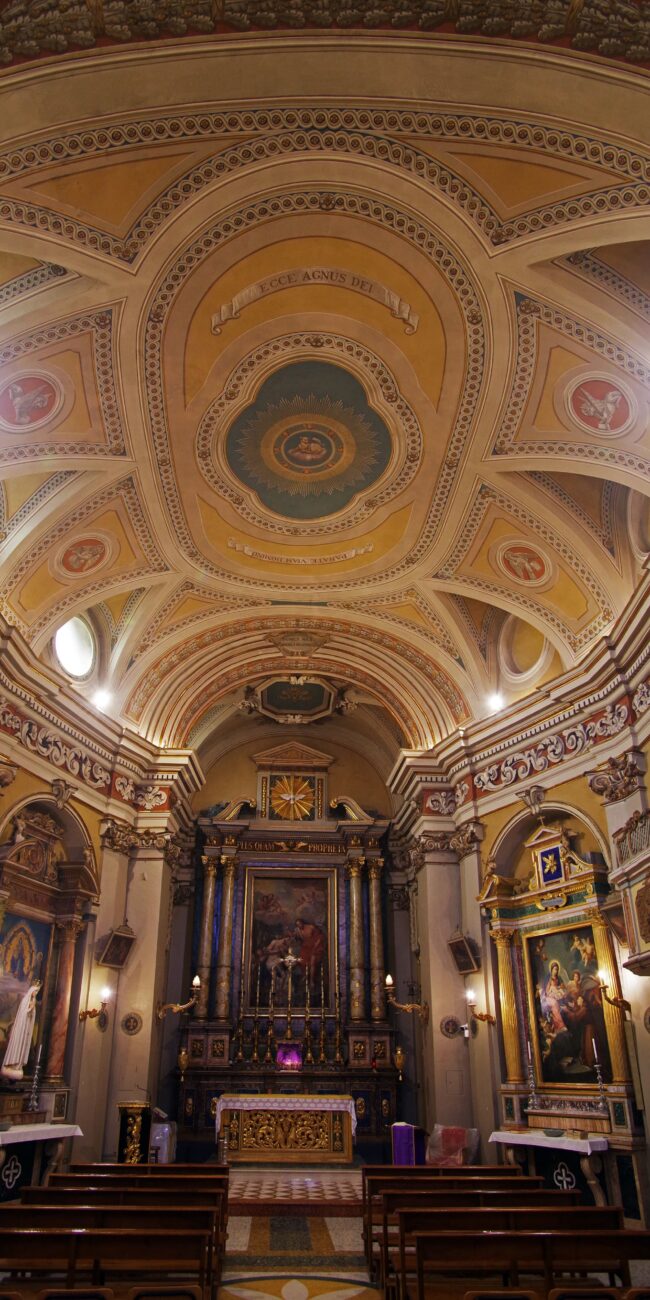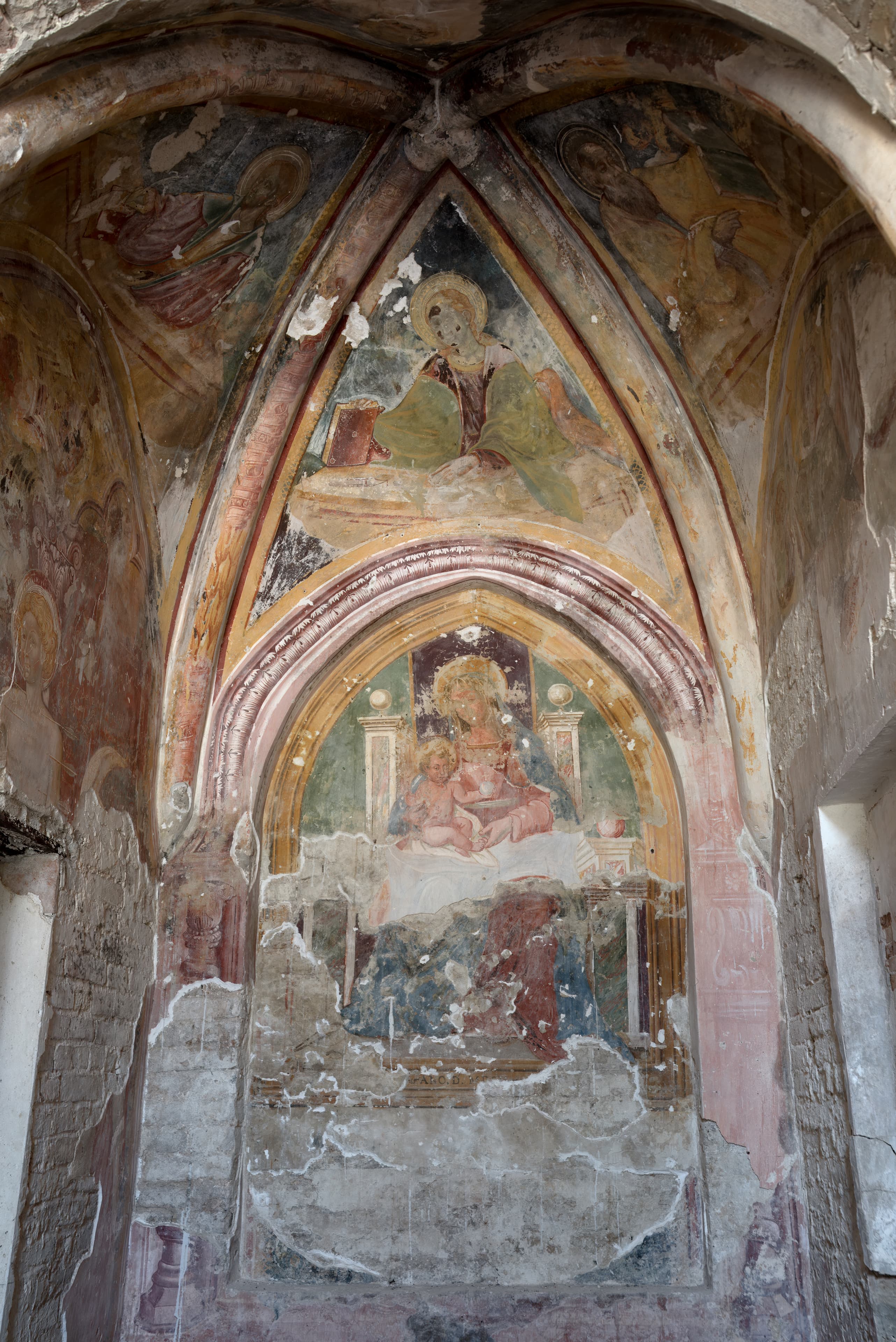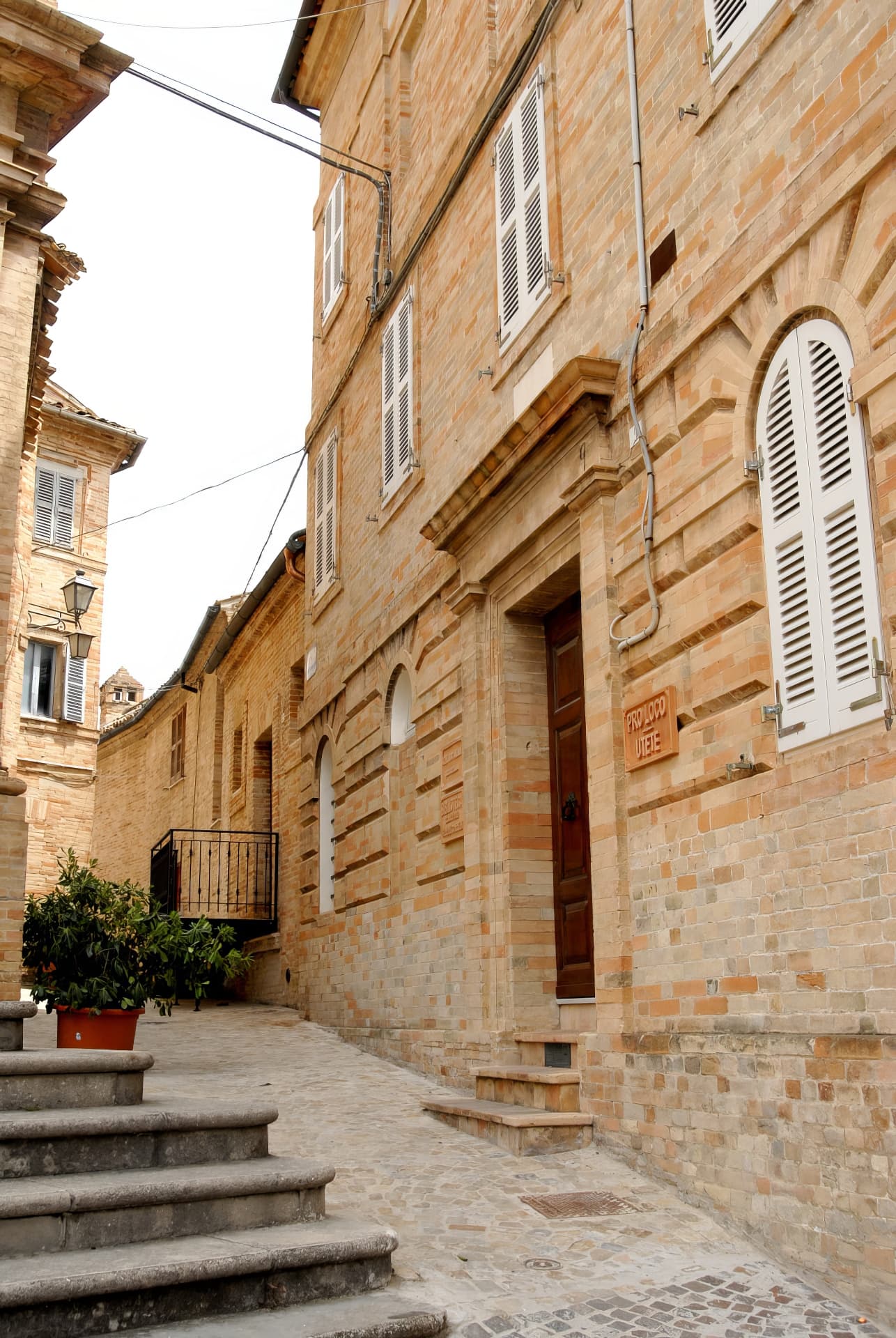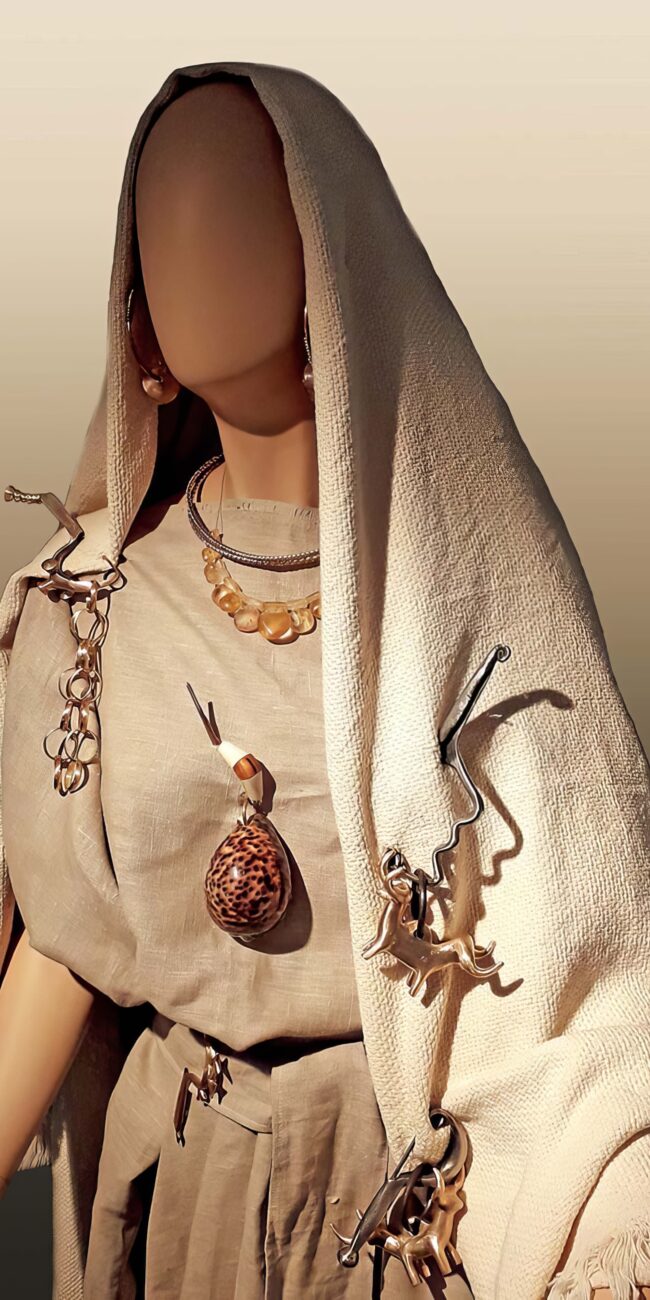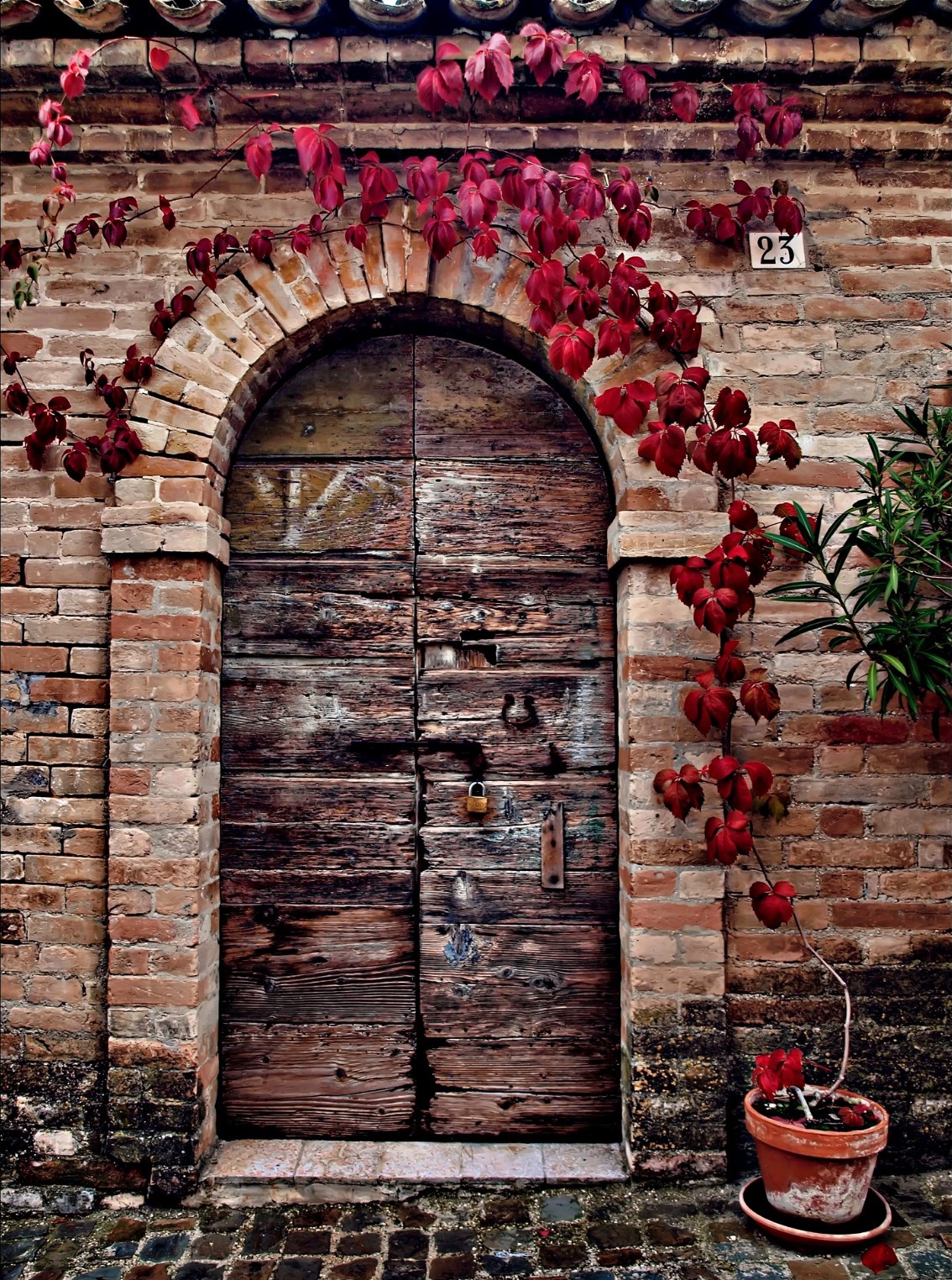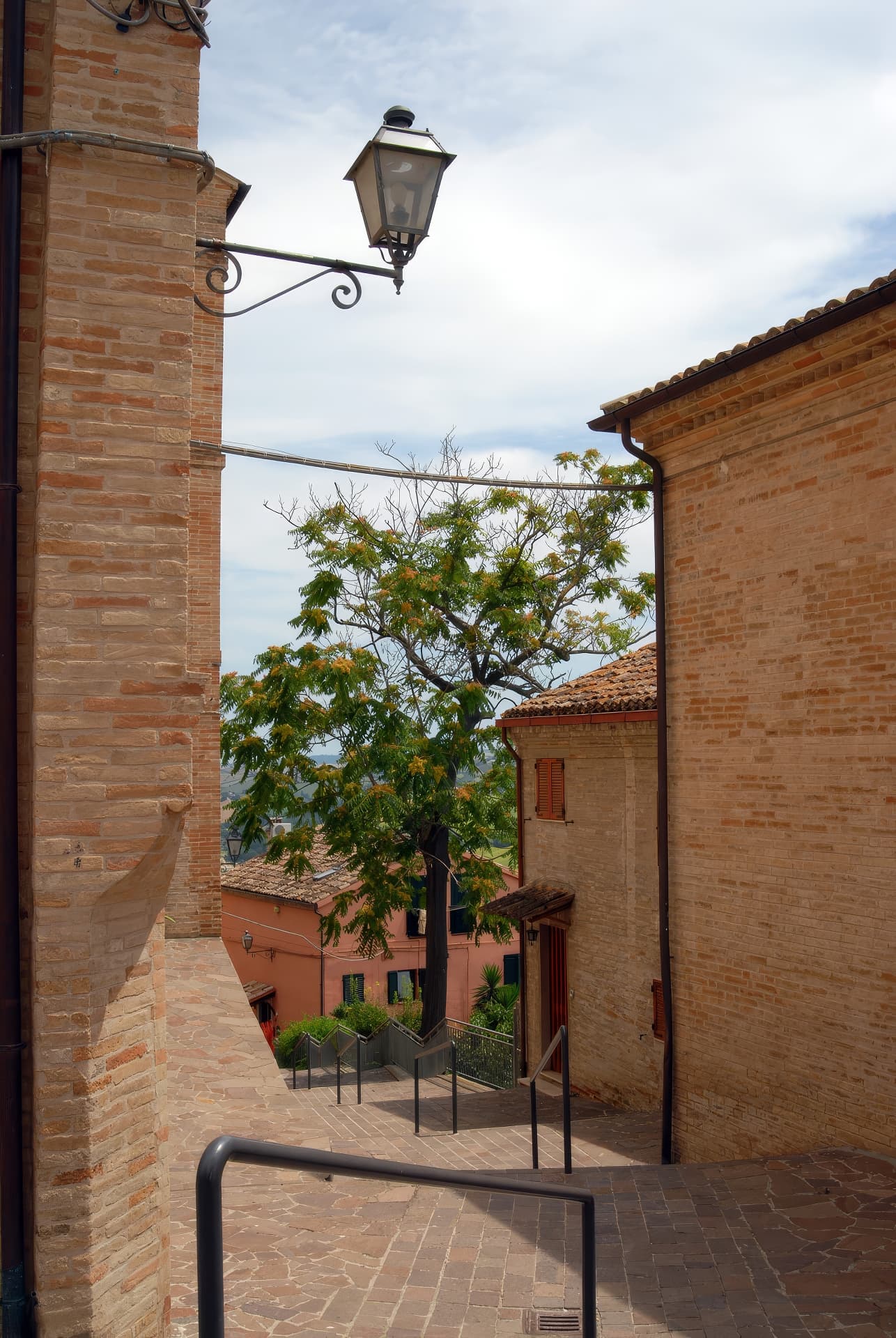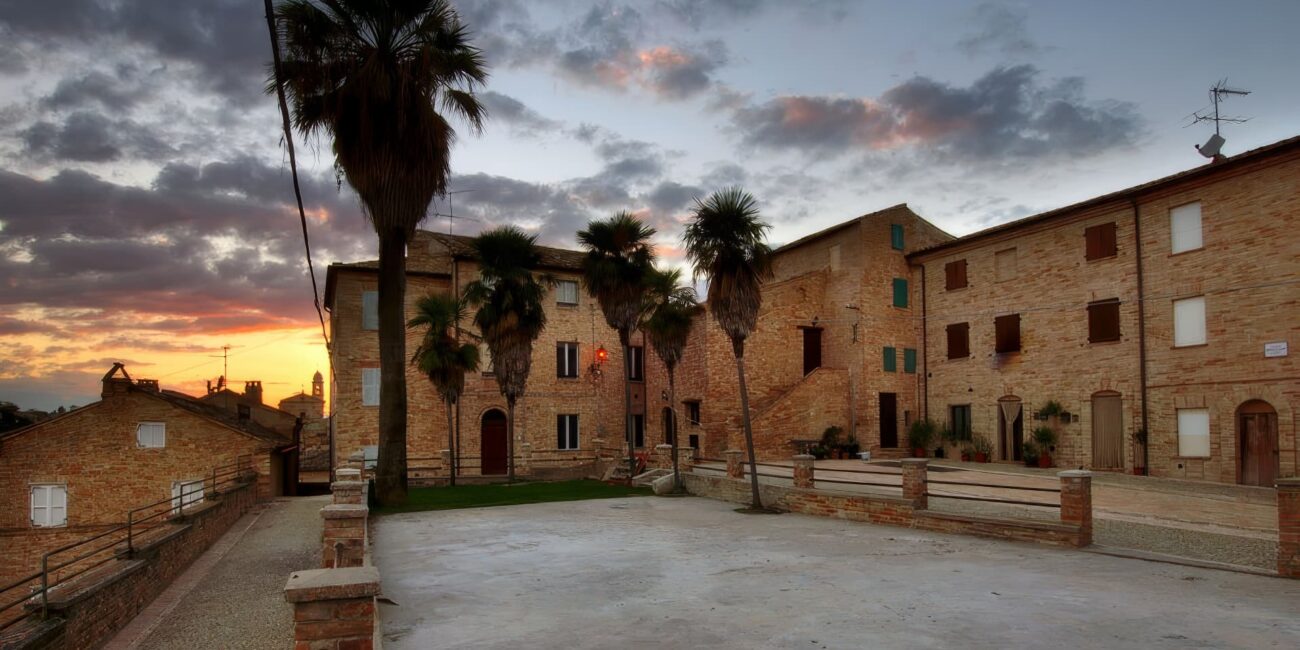Grottazzolina
Grottazzolina, a pretty town in the Marche region, is known for its welcoming atmosphere and relaxing landscapes. Its historic center retains the charm of its ancient streets, while the surrounding countryside offers opportunities for pleasant walks and quiet moments in nature.
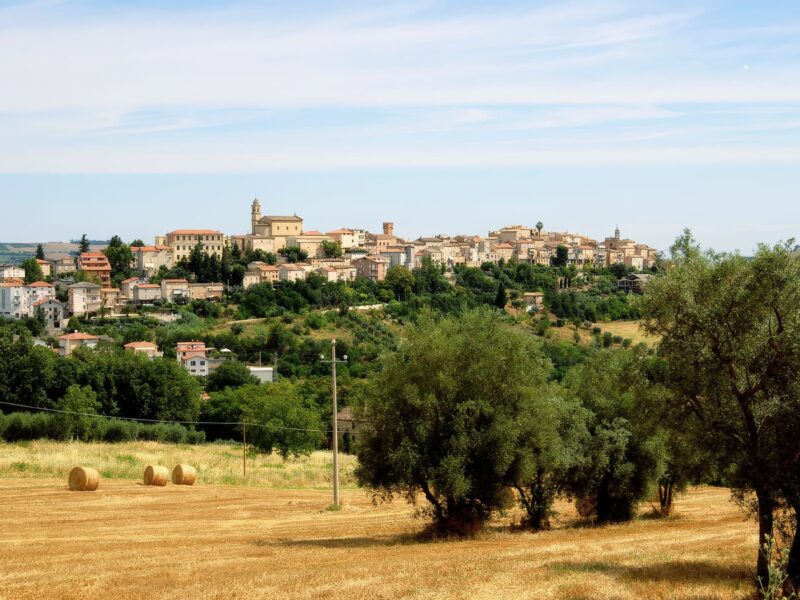
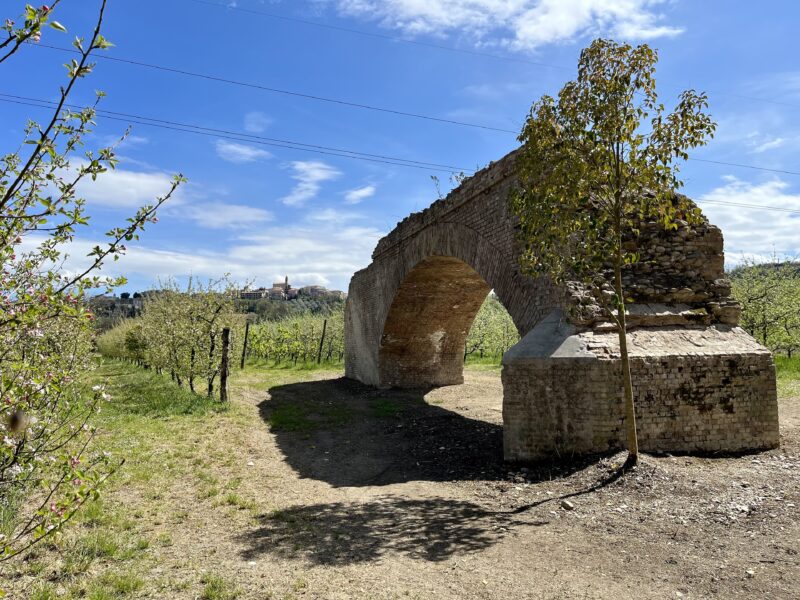
In the heart of the Province of Fermo, halfway between the Adriatic Sea and the Sibillini Mountains, on a gentle hillside 227 meters above sea level, lies Grottazzolina (pop. 3400), a town with a historical vocation for arts and business.
Its history has very ancient origins. Archaeological excavations of the Picenian necropolis, carried out between 1948 and 1953, testify to early settlements in the area in the 8th century BC. Then the territory came under the control of the Romans (from the Roman period some tombs in the same area as the Picenian necropolis) and suffered barbarian invasions. In the mid-10th century A.D. the castle, the first inhabited nucleus of the town, called Montebello, was built by the Farfensi monks; shortly afterwards it came under the domination of the Canons of Fermo Cathedral, who changed its name to Grotta dei Canonici (Crypta Canonicorum).
The new name of Grotta Azzolina, has origins in the Late Middle Ages: it was Azzo VII, called Azzolino, who renamed the town after taking possession of the Marca Fermana in the 13th century. From the 14th century Grottazzolina was under the rule of the city of Fermo, governed by a free government under the State of the Holy See. The castle of Grottazzolina suffered repeated looting and occupation over the years, and only after 1465 was order restored by the Fermano Senate. Grottazzolina was fortified by the Lord of Fermo Oliverotto Uffreducci, who established a cannon foundry there : this is where the great Grottese passion for gunfire, thundering, and then for I fuochi artificiali, typical of the historic patronal festival, is said to derive from.
The center was erected as a free commune in 1537, but after 10 years it returned under the jurisdiction of Fermo by order of the Pope. From 1600 Grottazzolina was then governed, like 47 other Castles by the city of Fermo, through Podestà and Vicari. Finally, after the Battle of Castelfidardo, its history merged with that of the Kingdom of Italy and municipal autonomy began. Its liveliness, also political, meant that the likes of baritone Francesco Graziani (1895 – 1901) and Vincenzo Monaldi (in the 1920s until the advent of Fascism violently forced him out of political life) world-renowned professor and first minister of Health of the Italian Republic sat in the chair of first citizen. The last century Grottese is characterized by important artisan development and small and medium-sized enterprises. Even today, the area is still capable of reconciling old-fashioned crafts with modern production techniques.
Various monuments are worth visiting. At the center of the historic settlement is Azzolino Castle, a symbol of town pride, with its medieval cistern.
In contrast, Cozzana, a neighborhood of ancient memory, embraces the east side of Umberto I Square where Palazzo Benedetti, a former hospital now an association headquarters, stands.
The churches are then real jewels. The parish church of St. John the Baptist (rebuilt in 1684, the earlier Romanesque-Gothic one occupied the site of a pagan Roman temple and an earlier Paleo-Christian church ) was listed among the National Monuments especially for its fine stucco work. The National Inventory of Art Objects of 1936 records in particular the painting in front of the high altar, oil on canvas depicting the Baptism of Jesus, probably the work of Ubaldo Ricci in the 17th century, with memories of Pomarancio. The Church of the Most Holy Sacrament and Rosary (17th century) preserves several frescoes and altarpiece by Luigi Fontana (1884), a statue of the Madonna of the Snow in gilded and painted wood by the Neapolitan artist Aniello Stellato in 1612, and a callido organ. S. Maria a Piè di Costa, on the other hand, still has frescoes dating from the 15th century. More recent monuments the Art Nouveau-style “Ermete Novelli” Municipal Theater and the Town Hall, in Romanesque style with medieval intonation and interesting crenellated tower, the result of the work of a local cooperative.
Finally, the town’s associsionist vocation and two main festivals should be noted: the patronal one dedicated to the Blessed Virgin of Perpetual Help in early June and the Historical Reenactment “The Days of Azzolino “in early August.
Monuments, churches
- Ermete Novelli Theater
- Azzolino Castle and historic village
- Church of St. John the Baptist
- Church of the Blessed Sacrament and Rosary
- Church S. Maria a Piè di Costa
- Municipal Palace
- Monument to Pope John XXIII
- Source St. Peter
- Pupilli Palace
- Old Railway Bridge – Nature Area
- “Generation of Picenes” exhibition.
- City Library
Punti chiave
Ecco alcune informazioni chiave
Info and contacts
Comune di Grottazzolina
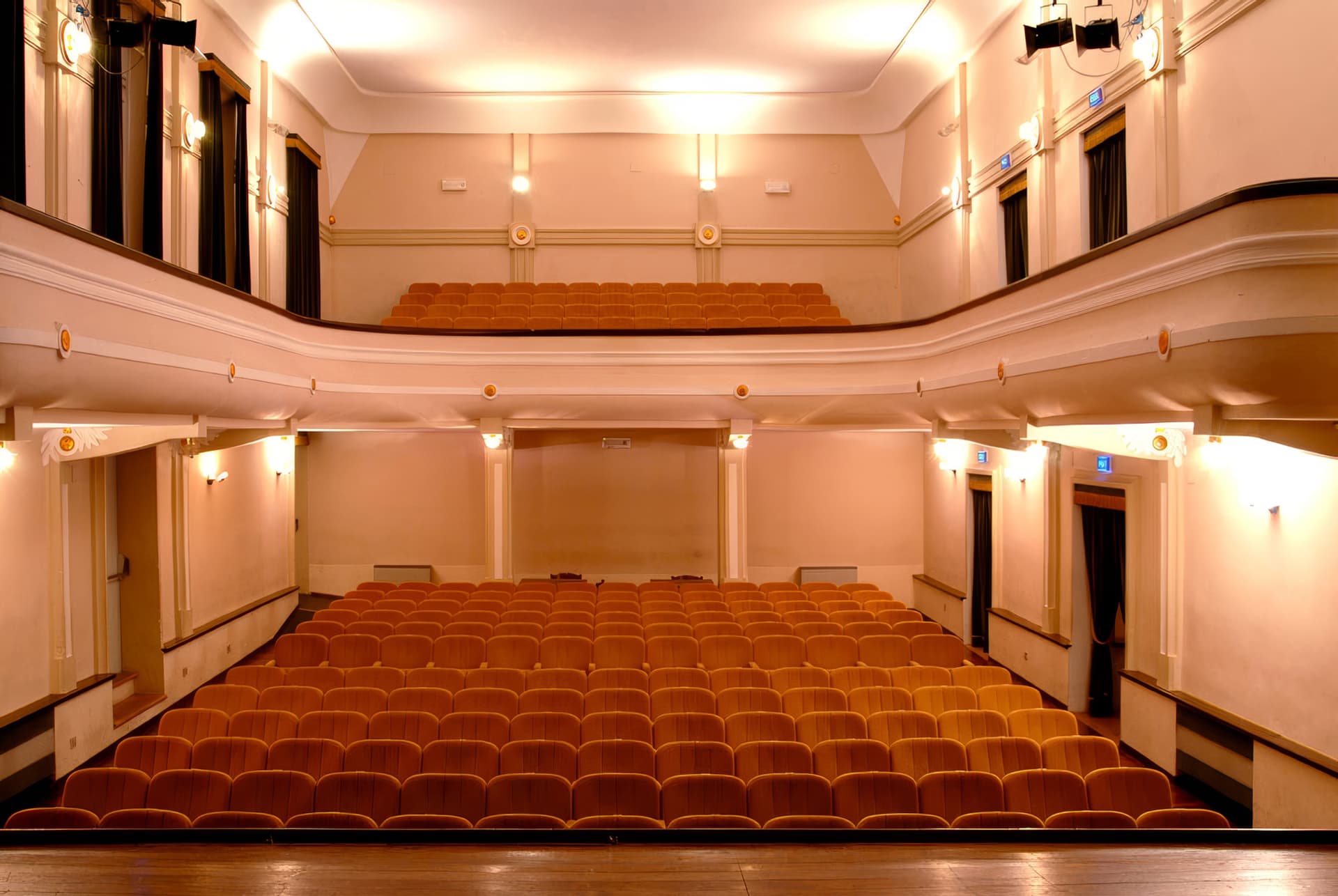
Map
Richiedi informazioni
Contattaci utilizzando il modulo seguente.

